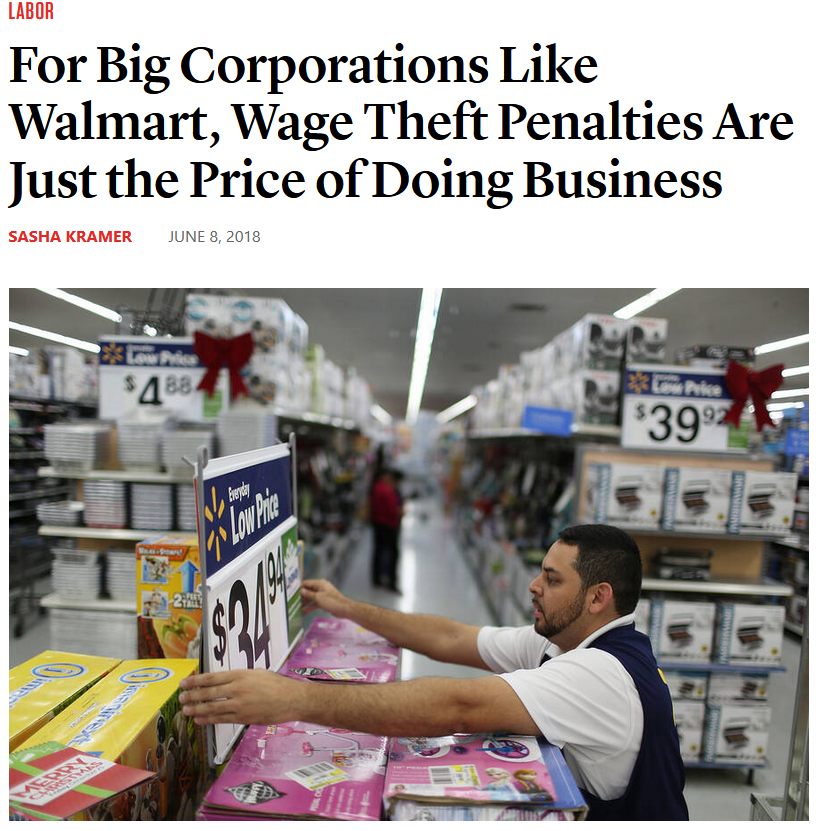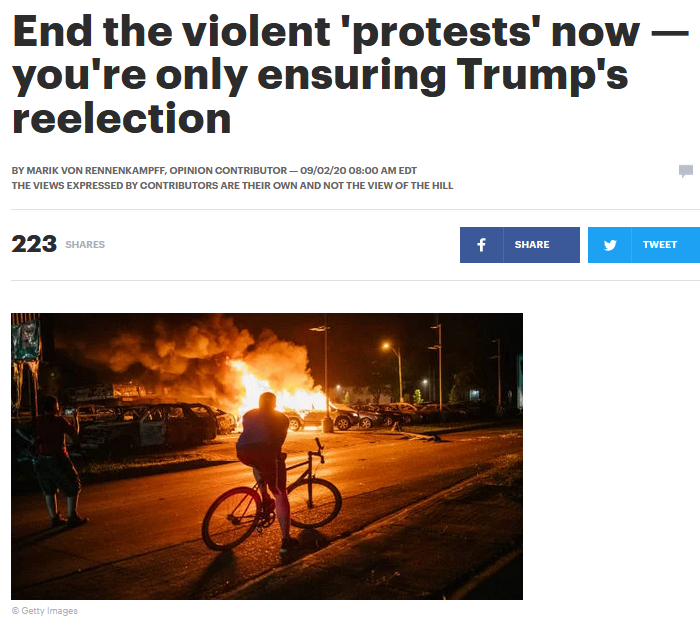 | |
|
 Aside from the coronavirus pandemic, this year has also seen unprecedented mass uprisings against the US’s white supremacist police state after the death of George Floyd at the hands of the police in Minneapolis. However, throughout the ongoing protests this year, corporate media seemed to take every opportunity to vilify the Black Lives Matter (BLM) movement by spinning the protesters—rather than the racist and authoritarian US regime they are protesting against—as the primary instigators of violence and theft, in addition to preemptively blaming them for Trump’s reelection.
Aside from the coronavirus pandemic, this year has also seen unprecedented mass uprisings against the US’s white supremacist police state after the death of George Floyd at the hands of the police in Minneapolis. However, throughout the ongoing protests this year, corporate media seemed to take every opportunity to vilify the Black Lives Matter (BLM) movement by spinning the protesters—rather than the racist and authoritarian US regime they are protesting against—as the primary instigators of violence and theft, in addition to preemptively blaming them for Trump’s reelection.
When the protests began after Floyd’s death, corporate media reports were quick to blame BLM for initiating violence, portraying them as senseless rioters in an otherwise peaceful and tranquil society.
- NBC News (6/1/20): “Some George Floyd Protests Turn Violent in Several West Coast Cities”
- Wall Street Journal (6/2/20): “Protests Sparked by George Floyd Death Descend Into Violence Despite Curfews”
- ABC News (7/26/20): “Police Declare Riots as Protests Turn Violent in Cities Nationwide; 1 Demonstrator Dead in Austin”
- Wall Street Journal (7/26/20): “Violence Erupts Around Protests Across US”
- Associated Press (8/22/20): “Portland Protest Turns Violent, Federal Police Clear Plaza”
- Chicago Tribune (8/15/20): “Protests Turn Violent in Downtown Chicago”
- 9&10 News (9/24/20): “Protests Over Breonna Taylor Case Turned Violent Overnight”
- CNN (10/28/20): “Philadelphia Puts Curfew in Place After Violence Erupts During Protests over the Fatal Police Shooting of Walter Wallace Jr.”
As it happens, a study by the US Crisis Monitor (9/3/20), a joint effort by the Armed Conflict Location & Event Data Project (ACLED) and the Bridging Divides Initiative (BDI) at Princeton University, found that 93% of all racial justice protests since Floyd’s death have been peaceful and non-destructive. These findings contradict the misleading impressions corporate media coverage have given about the BLM uprisings spawning a massive wave of violence and property damage.

A Wall Street Journal headline (6/2/20) exemplifies the assumption that despite police killings of civilians and forcible repression of dissent, the situation does not "descend into violence" until protesters fight back.
But focusing too much on whether violence occurred at the protests or not would be missing the point by conceding too much to the copaganda narrative. The “violence” did not begin when protesters began destroying property; this is a reversal of cause and effect. In actuality, the US “turns violent” every time Black people are brutally beaten down and murdered by the state for trivial or nonexistent infractions in the US’s selective enforcement system (often euphemized as a “law enforcement system”). As Adam Johnson and Nima Shirazi of the Citations Needed podcast (8/9/17) pointed out, when white supremacy is the default setting of corporate media, Black people dying at the hands of the racist police state is not really “violence,” or a disturbance of the peace, but simply the natural state of affairs.
This “turning violent” framing also neglects how brutal actions by police officers escalate violence, as many observers of these rebellions pointed out that “looting” and “destruction” often take place after the police begin violent repression. This serves to encourage and justify a police crackdown against all protesters under the pretext of only going after “violent” protesters, even though nonviolence is no guarantee that they won’t also be targeted for state repression (FAIR.org, 6/8/20). Indeed, making the violence of protesters disrupting the status quo the predominant focus of media scrutiny and scorn makes it hard for [their] audiences to realize the much greater violence that is being inflicted by the police to maintain it.
Despite media obfuscations and euphemisms (FAIR.org, 6/5/20, 6/7/20) that give a false sense of parity between unarmed protesters and armored militarized police, using terms like “skirmishes'' and “clashes” (FAIR.org, 6/9/20), only one side routinely uses chemical weapons banned on the battlefield on protesters, uses mass arrests of protesters to intimidate dissent and is responsible for the vast majority of assaults on journalists (around 80%, as of June 4) to suppress unfavorable information. And only one side has plowed vehicles through large crowds, shot at people on their porch, trapped thousands of people on bridges, and kills hundreds of people every year.
Since the beginning of the uprisings, corporate media have also focused intensely on the break-ins at businesses that have occurred at some of these protests, which might give the misleading impression that stealing by BLM protesters is the most troubling form of theft in the country:
- Fox News (6/1/20): “Rioting, Looting Linked to George Floyd Protests Leaves Trail of Destruction Across American Cities”
- New York Post (6/3/20): “Soho ‘Looting Street Party’ Video Goes Viral as de Blasio Downplays NYC Chaos”
- USA Today (6/15/20): 'Peaceful Protests Got Hijacked': Some Criminals Used George Floyd Protests as Cover for Looting, Police Say”
- Washington Post (8/10/20): “Looters Smash Business Windows Along Chicago’s Magnificent Mile After Police-Involved Shooting”
- Chicago Tribune (10/6/20): “Chicago’s Summer of Looting and Unrest, and How the City is Still Reeling”
- Fox News (10/28/20): “Philadelphia Police Say 1,000 Looters Targeting Businesses on Second Night of Protests"
- Philadelphia Inquirer (10/28/20): “Looting, Skirmishes Follow Peaceful Protests Over Police Abuse Against Black People and Killing of Walter Wallace Jr”
While it’s important not to handwave away the real violence that has occurred to the livelihoods of small business owners and their employees that were already struggling during the pandemic, it’s also important not to portray all protesters who target businesses as merely opportunistic thieves, or exaggerate the scale of economic damage caused by them. There are varying reasons why people commit vandalism during these uprisings, and by focusing on the act of “looting” itself, without exploring the reasons behind the act (such as expressions of anti-capitalist intent, or retribution against stores that don’t serve poor or minority communities), media oversimplify the story as a caricature of unruly mobs that need to be quashed (Vox, 6/2/20; Atlantic, 6/2/20).
|




No comments:
Post a Comment
Note: Only a member of this blog may post a comment.